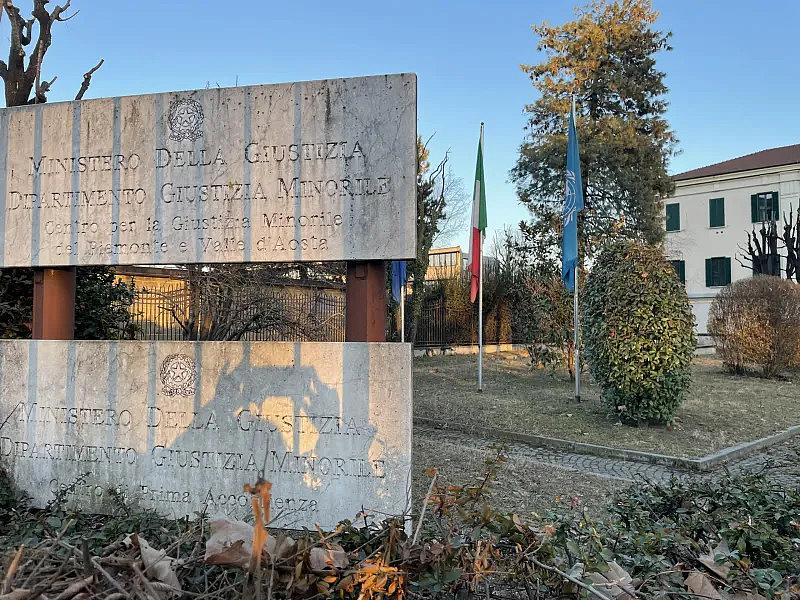Restorative justice solutions for youth are growing abroad, can they become part of the mix in the U.S.
This story is part of a larger project for the 2021 Data Fellowship, a program of the USC Annenberg Center for Health Journalism.
Other stories in this series include:
Reading through the lines: The correlation between literacy and incarceration

Restorative justice techniques are used in other countries such as Italy as a diversion tactic.
Graphic credit: Zoe Hambley.
The Positive Impact Circle at Piedmont Mediation in Statesville, N.C. starts first with an icebreaker. Tonight, each participant describes how they are feeling using a weather word.
At least three participants describe themselves as “sunny.”
Then, the mediator reads a script.
“The Positive Impact Circle includes those harmed by the offense, those who committed the offense and the community to determine the most effective response to promote healing and safety for everyone,” the mediator begins.
The underlying philosophy for Piedmont Mediation’s process is restorative justice, said Terri Masiello, Piedmont Mediation’s executive director and the coordinator of the Restoring Youth Coalition of North Carolina.
Restorative justice is the practice of bringing together affected parties of a crime to discuss what happened and what needs to happen to make things right.
Piedmont Mediation is a diversion program that serves as an alternative to juvenile court for some cases in the Piedmont area of North Carolina, serving Alexander, Iredell, Davie, Davidson and Randolph counties.
Masiello was trained in restorative justice in Colorado about seven years ago. In 2018, she started working with North Carolina’s juvenile system to help expand restorative justice programs in the state. This year, she said she’s seen an uptick of referrals to her programs.
They have advocated for less punitive approaches to juvenile offenses. That will be important as kids return to school post-pandemic. As schools have resumed in-person instruction, advocates for children say they’re starting to see an uptick in juvenile justice complaints.
I hadn’t heard much about restorative justice in North Carolina, where it still remains the exception instead of the norm. I first heard about restorative justice in a different Piedmont, the Piemonte region of northern Italy.
Reframing juvenile justice
Juvenile justice is different in Italy, said Michele Miravalle, a researcher at the Università degli Studi di Torino in Turin, Italy.
In 2019 North Carolina, a state with 10.5 million people, incarcerated an average of more than 300 children 16 years old and under in various facilities on any given day. That was before the Raise the Age law was enacted.
In contrast, a January 2021 report showed there were 281 children and young adults up to 24 years old incarcerated in Italian penal institutions on any given day for a population nearly six times the size of North Carolina.
The Turin Department of Juvenile Justice. Photo Credit: Elizabeth Thompson.
Diversion is a key part of the system, Miravalle said. Culturally and systemically, Italy’s juvenile justice system thinks differently about offenses by children than in the U.S.
“We have this strong Catholic tradition, even if we are in the postmodern era,” Miravalle said. “You still have this idea that if you are young, at the end, you need one more chance.”
One of the underpinning principles surrounding recent reforms to juvenile justice in North Carolina is that children are still developing behavioral regulation. That has played out in the push for the Raise the Age legislation which spared 16 and 17-year-olds who committed nonviolent crimes from the adult criminal justice system and the more recent efforts to pass Raise the Minimum Age legislation, which changed the minimum age for children to go to juvenile court from six to 10.
Countries such as Italy have begun to move away from thinking about juvenile offenses as crimes, and more like opportunities for rehabilitation.
Italy is at the forefront of implementing restorative justice practices, such as victim-offender mediation, in which the victim and the perpetrator of a crime meet, and with the help of a mediator, reconstruct what happened in the incident.
Victim-offender mediation was first introduced to Turin’s juvenile justice system in the mid-90s. Now, it plays a critical role in the way juvenile offenses are processed.
Restorative justice is often mistakenly perceived as a “weak response” to a crime, said Beatrice Maccarini, a mediator and member of Cooperativa DIKE per la mediazione dei conflitti.
In fact, victim-offender mediation is often very difficult for both the victim and the perpetrator of the crime, Maccarini said.
“There are some questions when you are victim of a crime that nobody can answer but the offender,” Maccarini said. That includes questions such as “why me?”
Maccarini makes the analogy that a crime, at its core, is a breakup of a relationship. The breakup of that relationship can cause fractures in all kinds of social relationships and expectations. Getting those answers can help both parties begin to repair that relationship, Maccarini said. It can help them to start healing, to be restored.
In some cases, Maccarini said she has seen mediation sessions where a victim and perpetrator of different incidents, but similar types of crimes sit down together.
“It works,” she said.
Restorative justice in North Carolina
Piedmont Mediation is one of a number of organizations starting to employ restorative justice practices in North Carolina.
After the state’s Division of Juvenile Justice and Delinquency Prevention (JJDP) receives a complaint, a juvenile court counselor can make a diversion plan for the youth and their parent or guardian without sending the child to court, said Jerry Higgins, communications officer for JJDP at the North Carolina Department of Public Safety.
“Based on the information at hand, state juvenile court counselors can refer at-risk children and their families to programs funded by local Juvenile Crime Prevention Council programs and other programs,” Higgins said in an email. “JJDP often directs parents to community resources as well as to the local mental health and social service agencies to assist them.”
Some of these programs include clinical evaluation and psychological assessment, home-based family counseling and restorative justice practices such as those employed at Piedmont Mediation.
Just as in Italy, the purpose of employing restorative justice practices is not to adjudicate whether or not a crime occurred.
“We make decisions about how to move forward,” Masiello said, “how to address the harm that was done, and also how to make sure that all the parties that were harmed including the youth move forward in a positive way.”
Crime impacts people in more ways than one, Masiello said. For both parties, the crime is more than just an isolated incident. It impacts them, their families, the way they are viewed by their community.
That’s why it can be so difficult to sit down and talk about it.
Community investment in children and taking responsibility for the next generation could be the key to making real change, said Barbara Fedders, assistant professor of law at the University of North Carolina at Chapel Hill School of Law.
“Maybe that’s part of the reason why it’s better in Italy,” Fedders said. “There’s more of a sense of social cohesion and being responsible for the next generation, even if they’re not biologically related. Because we need more of that.”
At the Positive Impact Circle, members of the community volunteer to participate, to listen to children explain their side of the story — not to judge, but to help them move on.
“We’re all very aware that we have a rare opportunity to play a role in that young person’s life,” Massiello said.
The “When kids’ cries for help become crimes” series is part of a data fellowship with USC Annenberg Center for Health Journalism.
[This article was originally published by North Carolina Health News.]

